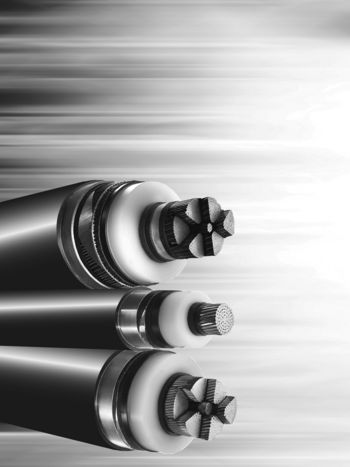Protocol for Reporting the Operational Performance of HVDC Systems
In the early days of HVDC CIGRE recognised the need to encourage the sharing of performance data on operating HVDC systems, to generate both confidence in the technology, and growth in the industry. It was considered that such information could be useful in the planning, design, construction and operation of new projects. It was also envisaged that the sharing of operational performance data could be of benefit to those concerned with the operation of existing HVDC systems or those planning new HVDC systems. It was clear that such reports were best prepared in accordance with a standardized procedure so that, with time, the accumulated data from several systems would establish a basis against which performance could be judged.
Members
Convenor (BR)
Sergio DO ESPIRITO SANTO
Secretary (US)
Neil KIRBY
Abhay KUMAR (Jain) (SE), Krister AKMAN (SE), Carsten BARTZSCH (DE), Yanny FU (NL)
CIGRE Study Committee B4 (formerly SC14) established Working Group 04, which was subsequently renamed as Advisory Group 04 (AG B4-04). The Terms of Reference (TOR) for the Advisory Group was initially based exclusively on HVDC, and the group had responsibility to establish a comprehensive set of parameters to allow operating HVDC systems to report their performance on a measurable and consistent basis for effective comparison. This comprehensive set of parameters was initially issued in the form of a defined “Protocol for Reporting the Operational Performance of HVDC Schemes” [1], and the data was gathered from as many operating HVDC schemes as possible, then published every 2 years as a “Survey of the Reliability of HVDC Systems Throughout the World During [years 1 and 2]” [2]. The Protocol and the biennial Survey have become widely accepted across the industry as the main mechanism for recording and reporting the operational performance of HVDC systems.
The value of this survey report has been proven over many years, providing a library of data from many HVDC Systems over many years of performance, both good and bad. The reports have benefited current and prospective owners of HVDC, allowing them to compare their own performance with similar systems elsewhere in the world, and identify common trends requiring further analysis, or to provide a realistic set of expectations for the definition of a new HVDC system.
As an example of the benefits of recording and publishing the report every two years, the analysis of the data provided from a number of schemes about 20 years ago showed that several schemes were experiencing similar issues with converter transformer performance, which spawned a more detailed level of assessment focussed on converter transformers. This analysis continues today, and reports are periodically published as Technical Brochures [3].
Reporting on the performance of DC Schemes started in 1968, and continues to this day, with the Protocol evolving as necessary to meet continually changing HVDC technologies, ratings, and applications. The HVDC technology has evolved over the years from a) Mercury Arc, with less than 10 systems constructed in the 1960’s and 1970s, through b) Thyristor-based Line Commutated Converter (LCC) systems schemes through the 1970’s to the present day, with several hundred schemes in operation globally, and c) the recent rapid growth of construction in Voltage Sourced Converter (VSC) links most in the form of Modular Multi-level Converters (MMC). All the original Mercury Arc Systems have now been decommissioned or replaced, and it is likely that with the rapid growth in VSC systems, the number of operating VSC systems will soon surpass that of the LCC systems.
The value of reporting the performance data on HVDC systems is of primary importance during the early days of transition from one technology to another. The present HVDC industry globally is adopting more and more established MMC technology, and ratings have evolved and settled around common values, necessitated by the need of the manufacturers to meet the unprecedented high demand for HVDC systems. As the industry continues to grow, there is an increasing need to gather performance data from as many new schemes as possible, to provide the current and future users of HVDC with a benchmark against which to specify, build and operate their system.


